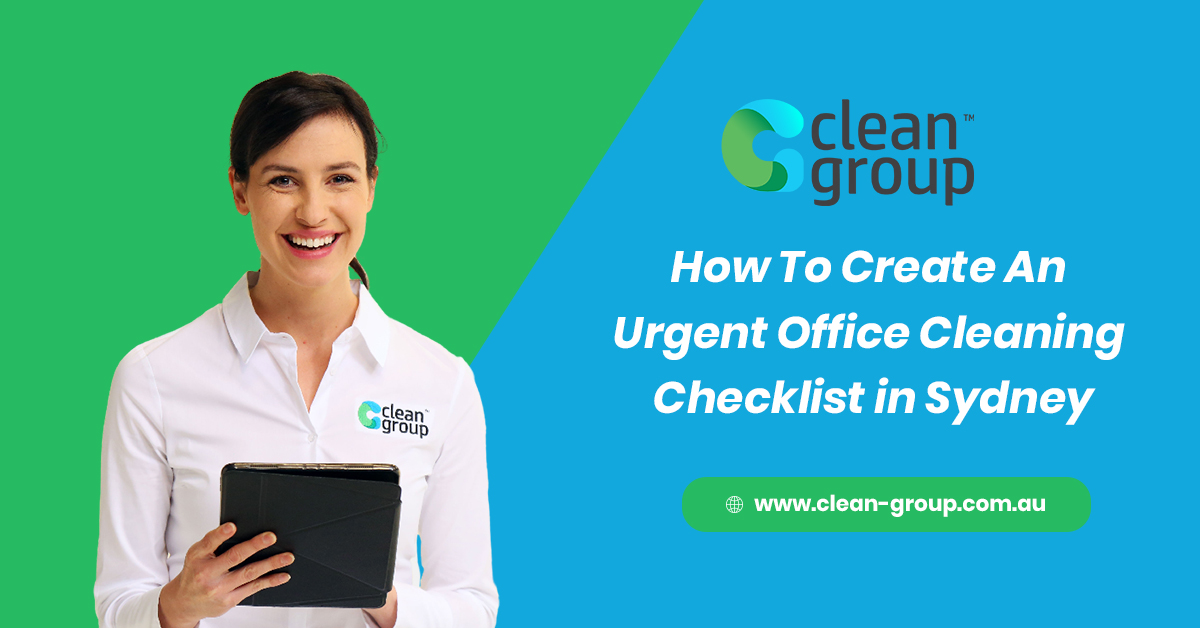If you are an urgent care facility manager or owner, you need to live up to the best quality standards when it comes to urgent office cleaners’ practices in Sydney. Nowadays, the weather begins to change a lot, causing people to catch colds and flu.
Many patients will be filling up your waiting rooms, but treating those patients has more to it than just writing them a prescription. During those tough times, you need to ensure your facility remains safe and disinfected to maintain the safety of your staff members and patients.
Even though you might be having a regular cleaning schedule for your facility, it might not be enough these days, as it was reported that many patients get sick from visiting healthcare facilities. Therefore, urgent office cleaning services were implemented to reduce and eliminate the risks of diseases spreading. Keep reading Clean Group this informative article to find out more about typical cleaning procedures.
What Is Urgent Cleaning?
Urgent cleaning is anything that might cause an immediate risk to the well-being of the people around whether it’s a hygiene issue or a safety issue such as spillage. Non-urgent cleaning is the daily cleaning routine like cleaning and wiping surfaces, taking out the trash, and keeping the area neat, tidy, and most importantly, clean.
How Urgent Care Cleaning Protocols Differ From Other Healthcare Facilities
The protocols of urgent care facility cleaning might be a bit different from ambulatory surgical centres and hospitals. For instance, some urgent care centres offer acute medical care and non-emergency services, however, they are not equipped with operating rooms.
Patients who suffer from flu or cold cases are more comfortable using the urgent care facilities as patients are checked and offered treatment within an hour or so. Therefore, urgent care centres pose a risk of infection spreading unless practices for strategic cleaning were implemented.
Why Is Comprehensive Urgent Care Cleaning Important?
While patients are being treated for any reason, they might be exposed to something called healthcare-associated infections (HAIs). This type of infection can happen to any patient in any kind of healthcare centre especially the ones with high traffic.
According to the CDC, at least one in every 31 patients has one or more HAI on any given day. If not treated properly and quickly, these infections could lead to thousands of people losing their lives every year.
HAIs are usually transmitted through surfaces and medical equipment high-touch, which leads to contamination. On the bright side, disinfecting high-touch surfaces can significantly help reduce the spread of infections and diseases.
Considerations for Developing Your Urgent Care Cleaning Checklist
As a facility manager, consider doing an inventory of how clean your facility is. Including the last time you had a deep clean for the entire facility, how often you disinfect cabinets, tables, and counters, and if your janitorial closet is equipped with high-quality disinfectants and cleaning supplies recommended for healthcare settings cleaning.
Once you have all of the above data, you can afterwards start taking action and making changes to implement healthy changes to create a healthy and safe environment for patients and staff.
Set a schedule for regular cleaning whether it’s daily, weekly, or monthly. For instance, places of high touch such as phones, door handles, medical equipment, and patient rooms should be disinfected and cleaned thoroughly after every patient leaves the room.
Other cleaning tasks such as cleaning the insides of cabinets and shelves can be handled every quarter, regardless of the emergency cleanings which might arise on any given day.
It doesn’t matter what you include in your cleaning checklist as long as your main goal is to lower the risks of HAIs spreading. Make sure to always stay updated with the requirements you need to follow to ensure your facility stays clean and healthy for staff members and patients.
What Products Do You Need for Urgent Cleaning?
Choosing the right products to use for disinfecting, sanitizing, and sterilizing could be a bit complicated as you need to consider the pros and cons of every cleaning chemical you use, especially in healthcare facilities.
Stringent disinfection lowers the spread risk of healthcare-associated infections (HAIs). There are currently five essential EPA-registered chemicals that healthcare centres and hospitals use for disinfectants: Accelerated Hydrogen Peroxide, Peracetic Acid. Quaternary Ammonium, Hypochlorite, and Phenolics,
What to Clean in Healthcare Facilities?
The most important areas to focus on cleaning while in a healthcare facility are the areas where body fluids and blood are usually present, such as operating rooms. These areas should be cleaned thoroughly and might need two or three staff members to help reduce cleaning time and ensure they stay on schedule.
Other areas to be cleaned are the areas of high-touch, such as tables, counters, cabinets, shelves, and medical equipment. Most importantly, the common areas such as bathrooms should be cleaned multiple times a day.
Deep cleaning tricks for the healthcare facility should occur regularly depending on the traffic this facility has. Some facilities choose to do it weekly, other facilities choose to do it every few days to avoid the spread of HAIs.
Where to Store Cleaning Products?
Even with proper training and documentation, the improper storage of cleaning materials such as chemicals might be extremely dangerous and even as dangerous as chemical misuse. Healthcare facilities, need to implement a chemicals safety program to ensure the safe storage of chemicals.
- Chemicals should be stored in a dry, cool, and clean space as some chemicals might have dangerous reactions when stored at a high temperature or high levels of humidity
- Store the cleaning chemicals in well-ventilated areas far from the HVAC intake vents to prevent any fumes from spreading to other facility areas
- Store the cleaning chemicals where they could be clearly seen. Not on top of a shelf of any storage areas
- Do not store cleaning chemicals on the floor even for a short period of time
- Do not put too many cleaning chemicals on one shelf and ensure to keep the spaces between the containers
Outsource Your Cleaning Needs
During your evaluation of your facility’s health and safety maintenance, if you determine that your needs are too large to be handled by regular cleaning staff, do not hesitate to outsource your cleaning needs.
At Clean Group, we offer you budget-friendly commercial cleaning & office cleaning services in Sydney by the hands of experts who are guaranteed to leave your premises sparkling clean & hygienic every single time.
For more info, visit our Clean-Group official website and feel free to request a free onsite quote, or chat with our customer support staff for further assistance.

